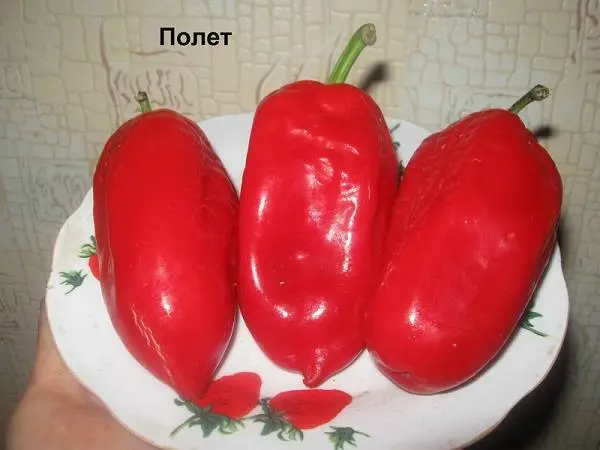Contents
Among the many modern varieties of sweet pepper, it is easy to get confused not only for beginners, but also for professionals. Among the peppers, there are those that were bred relatively long ago, but somehow got lost in the general stream of new products, the volume of which only increases every year. This happened with Poljot pepper, which is grown with pleasure by professional vegetable growers and farmers, but is little known to ordinary gardeners and gardeners. This variety of pepper is appreciated by professionals, first of all, for its attractive presentation and amazing aroma, which, moreover, are preserved for a long time. But gardeners may also be interested in getting to know this variety of sweet pepper.
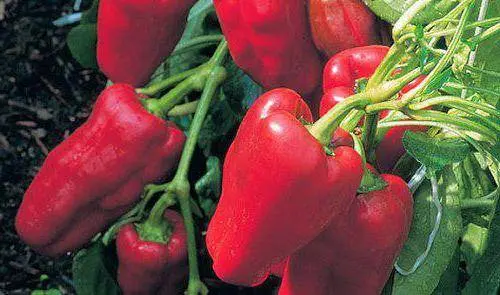
Variety description
Perhaps one of the reasons for the insufficient prevalence of Polet pepper among gardeners is that it owes its appearance to the scientific breeders Yu.I. Panchev. and Ilyenko T.S., who work at NIITSSSA (Research Center for Seed Breeding and Agricultural Technology), located in Transnistria. In Moldova and Ukraine, Polet pepper is quite widespread. And in Our Country it appeared only in the 90s of the last century. In 1997, it was included in the State Register of Our Country with recommendations for cultivation in the open field of the Central Black Earth and North Caucasus regions. In other regions of Our Country, it is desirable to grow this pepper in greenhouses, or at least in greenhouses, which is quite realistic, given the small height of its bushes.
Pepper bushes Poljot are standard, medium leafy, do not exceed 45-50 cm in height. Large dark green leaves are ovoid. In terms of ripening, judging by the reviews, Polet pepper can be classified as medium-early (fruits ripen 80-110 days after germination) and mid-ripening (when the growing season to technical maturity is 120-130 days) depending on growing conditions.
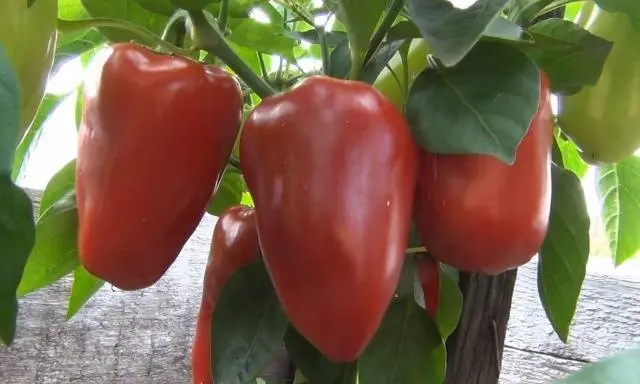
In any case, in order for the fruits to reach biological maturity (acquire the color required for pepper according to its characteristics), it is necessary to wait another 10-20 days.
As for the yield of Poljot pepper, there are some discrepancies between the actual results obtained and the declared characteristics in the description of the variety. The originator claims that the potential yield of this pepper variety can be up to 8-9 kg per square meter. In terms of hectares in industrial cultivation, this amounts to about 80 -90 tons of pepper fruits per hectare of plantings.
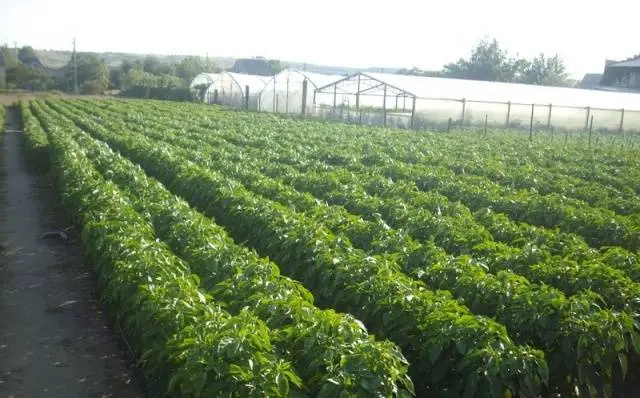
According to farmers’ reviews, when planting Polet pepper in the fields in the Central Black Earth region, they were able to achieve a yield of only about 1,5-2 kg per square meter. In the North Caucasus region, the situation with the yield of this pepper was better, but still it could not produce more than 3-4 kg per square meter of marketable fruits. Perhaps, yield figures closer to the declared ones can be obtained by growing this pepper in greenhouse conditions. In addition, the harvesting period is quite extended and in the total harvest for several months it is quite possible to collect up to 8-9 kg per square meter.
Plants tolerate relative cold quite well, are able to recover from stress quite quickly, and set fruit well in conditions of sharp temperature fluctuations.
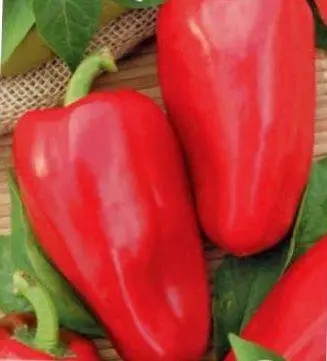
Fruit Characteristics
Pepper fruits Poljot have a very attractive appearance and have the following characteristics:
- The shape of the fruit is regular cone-shaped, with a wide base, while the edges are weakly expressed. The fruits are located, drooping to the ground.
- The surface of the skin is shiny and smooth.
- Inside there are only 2-3 seed chambers. The flesh is juicy and even crispy. Peppers contain from 7,2 to 8,3% dry matter.
- The color of the fruits at the stage of technical maturity is light green, when they ripen completely, they become dark red.
- Peppers can be of different sizes depending on the growing conditions, but, as a rule, they are quite large, weighing from 100 grams. Individual peppercorns can reach 250-300 grams. In length, the fruits reach 15 cm, in circumference – 6-10 cm.
- The wall thickness at the stage of technical maturity reaches 6 mm, and at biological maturity – 8 mm.

- Taste characteristics are rated as good and excellent. Fruits at the stage of technical maturity already contain from 2,4 to 4,2% sugars and about 55 mg of ascorbic acid per 100 g of pulp.
- But, the main thing that distinguishes the fruits of this variety is a pronounced peppery aroma that lasts for a long time.
- The purpose of the fruits is universal, since they are equally good in salads, and in the preparation of second courses and in a variety of twists. Fruits can be frozen.
- Peppers are distinguished by good keeping quality and high transportability. In a period of up to two or three weeks, they practically do not change their attractive appearance and aroma, which cannot but interest agricultural producers.
Advantages and disadvantages of the variety
Pepper Polet has many advantages that make it attractive for growing both on farms and in household plots:
- High yields;
- It sets fruits well in conditions of temperature fluctuations;
- Excellent presentation of fruits and excellent aroma;
- Good preservation of fruits and their transportability.

Pepper Flight has some disadvantages:
- Fruit size, as well as yield, is highly dependent on growing conditions.
Peculiarities of growing
Without a seedling period in Our Country, the cultivation of any variety of sweet pepper is impossible. Polet pepper seeds have a good germination rate, about 90%, which allows sowing even without special treatment.
The timing of sowing seeds depends on the timing of planting seedlings in a permanent place. If you are going to grow seedlings in the greenhouse in the future, then you can plant them in May. Therefore, it is better to sow seeds no later than February. In the case of growing peppers in open ground, bearing in mind the relatively early ripening of this variety of pepper, you can start sowing from the beginning of March.
Seeds can germinate from 4-5 days to two weeks. The fruit ripening time is calculated from the moment more than half of all shoots appear. The first two to three weeks after germination, seedlings need at least 12 hours of daylight, so it is advisable to arrange additional lighting for them. The temperature during this period should be moderate, about + 20 ° + 22 ° C, so that the root system is better formed. Watering is also minimal.
If you are growing seedlings of pickled peppers, then in the phase of the appearance of the first two true leaves, the plants must be carefully transplanted into separate containers. After transplantation, there may be some delay in development for 5-8 days. After the plants release two leaves, they can be additionally fed. It is better to alternate watering with fertilizers with foliar feeding, that is, spraying on the leaf.
At the age of 65-75 days, when the seedlings are preparing for flowering, they must be planted in a permanent place of growth. Between plants, 25-35 cm are left, while the aisles are made about 40-50 cm wide.
In the first days after planting, it is important to protect the peppers from cold and excess moisture until the roots of the plants begin to work in full force.
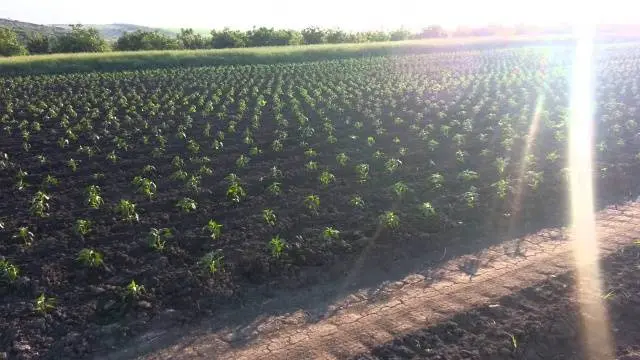
During the entire growth period, it is important to water the peppers very moderately, but regularly. It is advisable to use drip irrigation.
It is necessary to feed pepper plants at least three times during the growing season: before flowering, after flowering and during fruit ripening.
Harvesting usually begins in July and lasts several months until the onset of cold weather.
Reviews
Polet pepper is grown mainly by farmers and professional farmers, so there are few reviews. But those who have dealt with him recognize qualities worthy of growing him on their site.
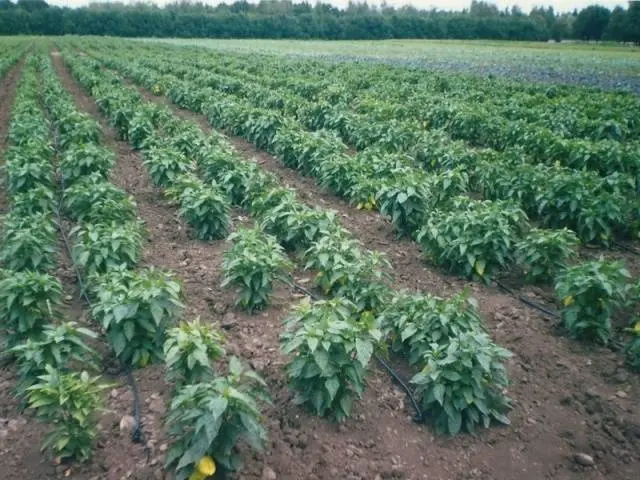
Conclusion
Pepper Flight may be of interest to many gardeners for its attractive appearance, taste, and aroma. Its yield is also quite decent, and with suitable agricultural technology, record results can be achieved.











